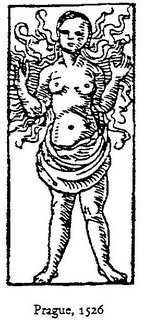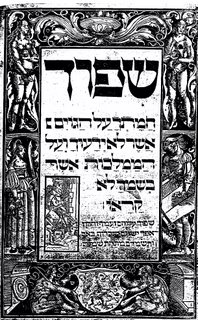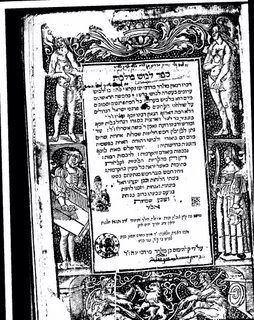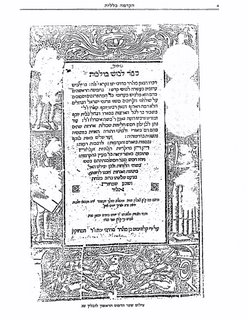There is a new sefer which offers a translation of Onkelos published by Gefen books. Onkelos, which is considered the authoritative translation of the Torah has, unfortunatly, suffered from the difficulty people have in reading it. Instead, most English speakers rely upon other translation, some which do not follow Onkelos. This has now been remidied by this new book “Onkelos on the Torah: Understanding the Bible Text” by Israel Drazin and Stanley Wagner.
The book is very user friendly. It contains the Hebrew text of the Torah, Onkelos and Rashi (vocalized). Additionally, it contains an English translation of Onkelos. The translation bolds any words that Onkelos changed from the literal meaning. The authors then have a commentary on each of those changes explaining why this was changed. Additionally, the authors provide an even more in-depth commentary in the Appendix, for those who want to go even further. Drazin, has edited a more scholarly treatment of Onkelos published by Ktav (for a lot more money).
One example from last weeks Parsha. Exodos 8:2 discusses the begining of the frog plauge. The translation is as follows: “Aaron stretched out his hand over the waters of the Egyptians, and the frogs ascended and covered the land of Egypt.” Thus, both Egyptians and frogs have been chaged by the targum. We will focus on the “frogs” change. The authors explain
FROGS The biblical reading is “bring up the frog” (in the singular), suggesting that one frog covered the entire land. Indeed, Rashi cites an opinion found in the Babylonian Talmud (Sanhedrin 67b) and the Midrash (Exodus Rabbah 10:4) that a single from came, split into other frogs and swarmed over Egypt. Our targumist prefers to interpret the biblical singular as “frogs,” which is closer to the intended meaning. Rashi also states that the singular form represents a swarm of frogs, just as the word kinam in verse 13 and 14, in the singular, refers to many lice. Our tagumist translates kinam in the plural in keeping with his understanding of the intended meaning of the word.
The authors in a section titled “Onkelos Highlights” offer an additional reason why the targumist picked this explaination.
Onkelos most often attempts to translate Scripture in accordance with the view of Rabbi Ishmael, rather thatn that of Rabbi Akiva – both spiritual giants of the second centruy CE. Rabbi Akiva, recognizing the sacredness of every word in the Bible, understood Scripture literally. Hence, when the Bible describes the second plauge in verse 8:2, stating that a “frog,” in the singular, covered Egypt, he understood it to mean that it was a single frog that miraculously afflicted Egypt. Rabbi Ishmael, on the other hand, insisted that “Scripture speaks in human language,” and that it often metaphoric and imprecise, a view embraced by Onkelos. The tragumist, therefore, translates the Hebrew word as “frogs,” to reflect the intention of the Bible, which frequently uses the singular in the place of the plural.
Thus, there is a basic controversy how to understand the Bible, with Onkelos taking one position which is reflected in his targum.
It is worthwhile to note how other translations have translated this verse (8:2) to compare and understand what they were doing.
Artscroll actually differs depending upon which book one is looking at. In the Artscroll translation that includes a translation of Rashi, the verse is translated in the singular – “frog.” This, as noted above, reflects Rashi’s understanding of the verse based upon the Midrash and the Talmud. Artscroll in their introduction claim they follow Rashi in their translation.
In the Artscroll Stone edition which is just a translation of the Torah with a commentary, the verse is translated as “frog-infestation.” The commentary notes that they followed Rashi on this as well (the second explaination offered in Rashi). However, a closer reading of Rashi actually leads to a different translation. Rashi states “The simple understading of this verse is that a singular form of frog can mean frog infestation.” Thus, Rashi is saying although only the singular is used it can mean multitudes. Therefore, Rashi would actually translate the verse, according to this understanding, as “frog” which would mean frog infestation, not that the translation is actually frog infestation.
Additionally, Artscroll does not explain why in one book they translated it one way and in the other a different way.
JPS follows Onkelos and translates “frogs.”
I do have one criticism of the an otherwise excellent work. I think it would have been even better if they had aside from bolding the English to bold the actual targum words that are changed. However, beside for this, this work allows many, who constrained by the difficult language employeed by the Targum to now study this invaluable work.
I purchased this from Biegeleisen for $27. As of yet the only volume published is the Exodus volume, however, the authors note that Genisis is almost complete. One can also buy this directly from the publisher and also see page samples here





